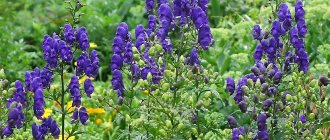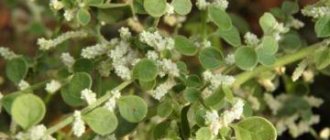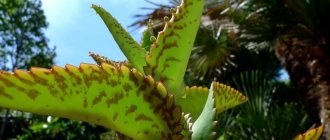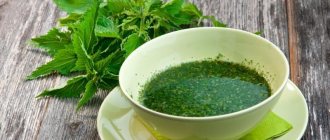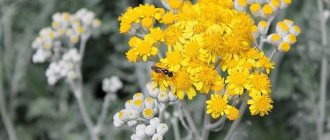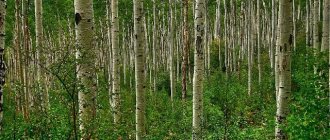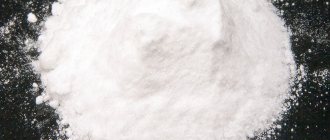Elderberry belongs to the branched shrubs of the Adoxaceae family. Since ancient times, elderberry has been used as a medicine in medicine, as an ornamental plant in gardens and as a culinary ingredient in dishes. It is even used as a means of fighting rodents. Even in Ancient Rome and Ancient Greece, the plant was grown for the preparation of medicines. Elderberry is revered by some peoples as a sacred tree; herbalists prepare healing tinctures and decoctions based on its fruits. Nowadays, these healing drugs are forgotten and unpopular by many, although black elderberry is used in pharmacology as a medicinal raw material. Elderberry is popularly called buzovnik, sambuca, pishchalnik or elderberry. There is a version of the origin of the botanical name of the plant. According to this version, the name is associated with a musical instrument called “sambuca”, which means “red paint” in Latin. Sambuca was made from the wood of the plant.
Botanical description
Black elderberry is a shrub with a perennial life cycle that sheds all its foliage during its dormant period. The berries are bony, black or purple-black. Despite the fact that the plant is classified as a shrub, with proper care it can grow into a real tree over 7 meters.
It has a rounded crown of regular shape, which is formed by branched stems of brown-gray color (young shoots are green) with a large number of yellowish lentils and large lanceolate leaves of deep green color.
They have an elongated shape, the length reaches 25-30 cm. The bark of the black elderberry has a characteristic brown-ash color.
Blooms in May-June, bears fruit in August-September
Blooms from late spring to early summer. Black elderberry flowers have a beautiful creamy color. At the moment of flowering, the shrub emits a pronounced sweet aroma. The fruiting period occurs in August-September, the berries are large, up to 1 cm in size, and have a sweet and sour taste.
Black elderberry is a non-capricious plant and tolerates a lack of daylight.
Flower formula. *Ch5L(5)T5P5 – regular flower with 5 fused sepals, petals and stamens, with one pistil.
Collection and storage
The collection of flowers begins from late May to mid-summer. Flowers are sensitive to moisture, so they must be collected correctly to avoid spoilage. It is recommended to collect raw materials from 2 to 3 o'clock in the afternoon in clear weather. Cut off the blooming flowers in inflorescences. The collected flowers should be immediately sorted and dried in air or in the oven at a temperature of about 35 ° C. Dried flowers should not be stored in plastic bags, as they will acquire an unpleasant odor and change color. Flowers can be stored for up to 2 years. The flowers taste sweetish with a faint aroma.
The fruits begin to be harvested at the end of summer. Unripe berries cannot be picked, they are poisonous. The berries are collected in a similar way. They are dried at a temperature of 60 ° C, after which the stalks are separated. The berries taste tart with a pronounced odor. The shelf life of the fruit is 6 months in an airtight container. If the berries are needed for making jam, marmalade or confiture, then there is no need to dry them. Fresh berries are suitable for use within 2 days. It is recommended to prepare juice from berries in a juicer or slow cooker, since in them the fruits remain whole and the juice does not produce bitterness. After preparing the juice, the berries are rubbed and the juice is expressed, and a healthy jam is made from the resulting pulp.
Collection of roots begins in late autumn. After collection, they are dried and ground into powder. The roots are stored for up to 5 years in airtight packaging. The bark of the plant is collected from a two-year-old bush in the spring before the buds appear. The bark is dried at temperatures up to 70°C and stored for up to 3 years.
Elderberry is stored in a dry and well-ventilated place. From time to time you need to sort through the workpieces, spoiled raw materials need to be thrown away.
Chemical structure
Elderberry fruits contain:
- glucose;
- fructose;
- free acids (mainly malic acid);
- vitamin C;
- tanning agents.
Dried leaves contain provitamin A.
Black elderberry inflorescences contain:
- mucous substances;
- malic, acetic and valeric acids;
- paraffin-like substance;
- solid essential oil;
- terpene and glucoside;
- having the diaphoretic effect of rutin.
The flowers of this plant have unique properties.
Useful and healing properties
The composition of the plant's flowers, rich in various elements, has a beneficial effect on various systems and organs. The presence of iron and copper salts improves the functioning of the circulatory system, in particular the production of red blood cells, which eliminates anemia. Potassium and magnesium are necessary for normal functioning of the heart muscle. Elderberry preparations strengthen the walls of blood vessels, increasing their elasticity.
Did you know? Among the popular beliefs of Ukraine, there is a legend that the devil himself planted the elderberry. Therefore, the villagers were careful not to dig up bushes, even if they were in the way of the farmstead.
Organic and fatty acids ensure normal digestion and metabolism. The condition of the gastrointestinal mucosa improves, the secretion of gastric juice and microflora are normalized. Fat cells are broken down faster, harmful cholesterol is eliminated and energy is produced. Glucose levels and water-salt balance return to normal, and the functioning of the enzymatic system improves. Slags and toxins, remnants of undigested food are removed from the body.
Antioxidants promote the production of antibodies, strengthening the immune system. If you have a cold, tea or a decoction of dried flowers will help bring down the temperature. For respiratory diseases, consumption will help remove mucus from the bronchi and eliminate the cause of cough.
- Elderberry products have the following medicinal properties:
- expectorant;
- astringent;
- antiseptic;
- antibacterial;
- diuretic;
- anti-inflammatory;
- antipyretic.
Classification
Representative of the Adoxaceae family. Previously, it was classified in the genus “Honeymacaceae” and was even separated into a separate genus “Elderberry”. Latin name Sambucus nigra L.
Other names:
- basenik;
- elderberry;
- elderflower;
- Sambuca;
- Swiss tea;
- wasteland;
- girlish sambuca.
Black elderberry belongs to a small number of species (400) of the honeysuckle family
Elderberry for mastopathy: treatment regimen
For fibrocystic mastopathy, black elderberry is one of the most popular and effective folk remedies. You can buy raw materials for the medicine at the pharmacy, but herbalists recommend preparing it yourself. To do this, black or grassy elderberry is collected, thoroughly washed and dried. Next, you can begin preparing the medicine. It happens according to this principle:
- Take a sterilized three-liter jar, place elderberries on the bottom so that their layer is as thick as a finger.
- Sprinkle sugar on top to cover the fruit.
- Repeat these alternating steps until the jar is filled to the neck.
- Close the container with a lid and place in a dark, cool place for 24 hours .
- After the allotted time has passed, express the juice that has formed. This will be your cure for mastopathy.
Treatment regimen:
- Take the resulting elderberry infusion strictly on an empty stomach, 10 ml , which is equal to 1 dessert spoon .
- Continue the course of therapy for 30 days , but if there is no improvement, repeat it after a short pause.
Do this until the benign neoplasm in the mammary gland completely resolves, or at least decreases to a minimum size.
Pharmacology
Black elderberry has medicinal properties and contraindications.
Due to its chemical composition, it is widely used in medical practice:
- It has the ability to inhibit inflammatory processes and promotes the regeneration of damaged skin.
- Helps digestion. Stimulates the production of gastric juice, reduces acidity, and has bile and diuretic effects.
- Speeds up metabolism.
- For diseases of the heart and blood vessels.
- Used in the treatment of hepatitis.
- Lowers insulin.
- Prevention of vitamin deficiency, antipyretic, antiphlogistic and expectorant.
- Eating berries is an effective prevention of atherosclerosis, insomnia and frequent headaches.
- Reduces blood pressure.
- Elderberry infusion compresses help with joint diseases.
- Skin problems: acne, dermatitis, pigmentation and acne rashes are solved with the help of elderberry decoction.
- Indications for use are:
- liver and kidney damage;
- the occurrence of peptic ulcer of the stomach and duodenum;
- constipation and bloating;
- high nervous excitability;
- difficulty excreting bile;
- boils, rashes, acne, diaper rash and other skin diseases;
- frequent colds;
- atherosclerosis;
- rheumatic lesions, arthritis, gout;
- inflammation of hemorrhoids;
- high cholesterol;
- increased blood sugar;
- metabolic disorders;
- prevention of tumor formation.
Elderberry has a number of medical restrictions:
- pregnancy and lactation;
- ulcerative enterocolitis;
- chronic forms of gastrointestinal diseases;
- diabetes insipidus;
- individual intolerance;
- Should not be taken by children under 12 years of age.
Dosage forms and doses:
- Syrup. Used to prevent ARVI, dry cough, immunomodulator with a general strengthening effect. It is prepared from berry juice, the freshly squeezed mixture is covered with sugar, the mixture is left to “ferment”, it is recommended to take one spoon 3 times a day for 1 month.
- Juice. It has a high content of vitamin C, it is taken to strengthen the immune system and prevent colds, flu and sore throats, stomach ulcers, and inflammatory processes in the genitourinary system.
- Tincture. Made from flowers and rhizomes. Flower concentrate is used as a diuretic, antiseptic and diaphoretic. If you add it to tea, you will get a wonderful tonic and strengthening balm.
- Extract. This is a concentrated extract, which is a component of many medications. Recommended for the treatment of colds and flu. It strengthens cell walls and prevents viruses from penetrating them.
Indications for use
Black elderberry can be used as a medicine for a number of the following diseases and conditions:
- ARVI, influenza;
- bronchitis, pneumonia, bronchiectasis, bronchial asthma;
- stress, insomnia, headache, cognitive impairment;
- atherosclerosis, coronary heart disease, arrhythmias;
- diabetes;
- fatty liver disease, alcoholic hepatitis;
- constipation;
- arthritis, arthrosis;
- edema syndrome, chronic kidney disease;
- inflammation of the prostate gland;
- dermatitis;
- increased physical and mental stress.
To treat a child, it is better to use ready-made elderberry supplements, some of which are approved from 1 year of age. Homemade products can be harmful to children's bodies, as they are difficult to dose accurately.
— 30%
Nature's Answer, Sambucus, Original Flavor, 12,000 mg, 240 ml
★★★★★
RUB 1,793 RUB 1,255
More details
Species diversity
Within the genus Sambukus, which includes the black elderberry, it is difficult to make a species classification due to the widespread distribution of the shrub and its morphological diversity.
According to various classifications, the family includes 9-40 different perennial herbaceous plants, bushes, bushes and even trees.
Both wild species (used as medicinal raw materials) and cultivated ornamental varieties are known.
Reviews about the application
You can share your recipes and leave feedback on the effectiveness of black elderberry in a special form:
| Leave your review | |
| 1 2 3 4 5 | |
| Send Cancel | |
Send your review
Black elderberry
Average rating: Number of reviews: 0
In reviews, many buyers write that they mainly use the plant for the prevention and treatment of colds, since elderberry shortens their course. They consider the risk of poisoning if the rules of use are not followed as a significant disadvantage.
Regions of growth
It is found in subtropics and temperate climates, in:
- Tunisia;
- Algeria;
- Europe;
- Iran;
- Turkey.
Elderberry grows mainly in Australia and the Azores, in the temperate and subtropical climate zones of the Northern Hemisphere.
Elderberry feels good in Ukraine, the Baltic states, Belarus, Crimea, the Caucasus, in the southwestern regions of Russia and in southern Siberia.
Regions of distribution on the map of Russia
Conclusion
Although elderberry has been linked to many promising health benefits, most studies have only been conducted in laboratory settings and have not been tested widely in humans.
Therefore, elderberry cannot be recommended for any specific health benefits.
Reasonable evidence supports the use of the plant to reduce the duration and severity of influenza symptoms. In addition, it may support heart health, improve antioxidant status, and have various anticancer, antidiabetic, and anti-inflammatory effects.
In addition, elderberries are an excellent addition to a healthy diet and a good source of vitamin C, fiber and antioxidants.
Specifics of black elderberry
The plant has a wide range of uses.
Pharmacological use
- Flowers, due to the content of essential oils, rutin and mucus, which can envelop the mucous membranes of the nasopharynx, as well as the presence of tanning substances, are widely used as an antiviral and antiphlogistic agent.
- The leaves, despite the presence of nerve paralytic elements in small quantities, are used as a remedy to counteract inflammatory processes.
- Fruits are a real “storehouse” of vitamins, sugars and organic acids. They contain carotene and rutin, which increase hemoglobin levels and improve the elasticity of small vessels. Natural highly effective laxative.
- Roots and bark. It is a diuretic and expectorant. The bark is a source of vitamin B4, which has atherosclerotic, membrane-protective and sedative effects, normalizes fat metabolism, and helps to lose weight.
Black elderberry bark is a source of vitamin B4
In nutrition
Elderberry water is made from elderberry flowers - a flavoring agent for liqueurs and fortified tinctures. The fruits are used as food coloring in creams, sweets, and wines. Used as a dietary supplement with almond flavor. A seasoning that can replace pepper.
Berries are consumed both fresh and processed. The scope of their application is extensive. This includes confectionery, jellies, winemaking, even vinegar making. Jam is made from the petals. Young leaves are good in salads.
In landscape design
An excellent option for landscaping, creating garden compositions and as a free-standing component of a garden composition. Thanks to its beautiful shape, it looks great in the center of smaller plants. It is bred to shade gazebos, dilute hedges and decorate the coastal zone of ponds.
In cosmetology
Cosmetics with elderberry are known as anti-aging, tonic, and:
- has an antioxidant effect;
- improves skin immunity;
- relieves inflammation, swelling;
- calms;
- tones;
- gives elasticity.
Elderberry is one of the most commonly used medicinal plants in the world.
Elderberry was used by Native Americans to treat infections, and the ancient Egyptians used it to improve complexion and heal burns.
It is still collected and used in folk medicine in many parts of Europe. Today, elderberry is most often taken as a supplement to treat cold and flu symptoms.
However, the raw berries, bark and leaves of the plant are known to be poisonous and cause stomach problems.
This article takes a closer look at elderberry, the evidence supporting its health claims, and the dangers associated with its consumption.
Folk remedies
Doctors among the people like to use black elderberry. Its medicinal properties are extensive, so various kinds of medicines are made.
Infusion of flowers for drinking
A balm with an anti-inflammatory and enveloping effect is made from the flowers. It is effective against colds and diseases caused by viruses at high temperatures. Used for tonsillitis, bronchitis. Removes mucus from the bronchi.
For external treatments and in gynecology (douching), flower infusions are used.
Laxative infusion of fruits
For constipation, an infusion of berries is good. You can prepare it from three tablespoons of berries and a glass of boiling water. Leave overnight and take one glass in the morning before meals.
Leaves poultice
Elderberry leaves are known for their anti-inflammatory effect and promote the healing of wounds, both clean and with purulent complications. The steamed leaves are placed on a cloth and applied to the wound.
Treatment of edema with elderberry bark infusions
Black elderberry bark powder helps fight swelling and is also used in the treatment of kidney diseases. The action of the drugs is selective (only on the source of inflammation), without affecting the functioning of the heart, and without increasing blood pressure.
Take the infusion up to four times a day, half a glass. It relieves swelling caused by cardiac disorders.
Uses of elderberries
Vein diseases, hemorrhoids, hepatitis, stomach and duodenal ulcers are treated with freshly squeezed juice or syrup based on it. The syrup relieves severe coughing attacks and helps thin sputum. Used to treat liver diseases and enhance choleretic processes, improves immunity.
Berry extract from fresh fruits is known for its antitumor properties.
Alternative medicine recommends the use of elderberry extracts as a prevention of cancer.
Elderberry syrup
Decoctions from leaves
The leaves are used to make decoctions. The leaves are mixed with sage and steamed with boiling water, one glass is enough. Leave the infusion for one hour, take half a glass per day
Side effects and allergies
The use of berries and other parts of elderberry should begin with a minimum dosage. It is also necessary to monitor your well-being for 2-3 days, as the drug can cause nausea, vomiting, diarrhea, as well as:
- headache;
- renal colic (in the presence of kidney stones);
- excessive sweating.
In people with a history of intolerance to one or more components contained in elderberry, decoctions and tinctures prepared on its basis can cause itching, rash or Quincke's edema.
How to grow
Rich lands are recommended for breeding, however, in nature it easily takes root both in the shade of the undergrowth and on poor soils. To grow black elderberry on the plot, you need to decide on the amount of gardening work, because a month before it you need to prepare the soil.
Dig a hole a little more than half a meter deep and wide. The top layer of soil is separated and mixed with humus in a 1:1 ratio, and phosphorus-potassium fertilizers are added. At this stage, you immediately need to assemble the fence so that the elderberry does not “scatter” throughout the area.
It is better to use slate or metal sheets. If you plan to form an elderberry into a tree, you will need support.
A black elderberry seedling is lowered onto a loosened layer of soil at the bottom, which has been fertilized with a small amount of mineral-enriched soil, covered with the prepared mixture, compacted and watered.
What are you rich in?
Blooming elderberry is rich in inflorescences that resemble umbrellas in appearance and have a specific, unique smell. Elderberry comes in two colors - black and red. Black is so named for the color of the berries that grow on it. It is edible and even has many medicinal properties, but the red one is not suitable for food - it is poisonous. Therefore, be very careful and never eat suspicious berries without first making sure that they are safe. The flowers of the tree are taken not by breaking, but by inflorescences when the collection is in progress, and only when they have already fully bloomed. It is best to do this when it is dry and sunny outside. In such weather, a walk will be a joy, and the grass for treatment will be collected according to all the rules. At the same time, you cannot dry the inflorescences in the sun; this must be done in the shade. As for the berries, they are harvested closer to September. Elderberry flowers, after they have dried, are used for medicinal purposes for no more than three years, or better yet, even less, but the berries retain their medicinal qualities for only six months. After the expiration date has passed, it may be dangerous to consume parts of this green doctor.
Reproduction
Parthonogenesis can be carried out using standard methods:
- seeds;
- layering;
- cuttings;
- dividing the bush.
When propagated by seeds, the varietal characteristics of the mother plant are almost never preserved. Therefore, vegetative propagation is recommended.
If you decide to propagate by seeds, you need to sow them in rows at a short distance from each other. Sowing depth is no more than 3 cm.
Propagation of black elderberry by seeds
For the cutting method, the material is prepared in July. The length of the cutting should not exceed 12 cm, have at least two internodes with a pair of upper leaves. Planted in a sand-peat mixture, covered with a plastic cap. In autumn, rooted cuttings can be transplanted into the ground.
Reproduction by layering is a method that gives almost 100% survival rate. Either young or lignified 2-3 year old shoots are used. They are bent into pre-dug grooves and pressed with staples so that the tops remain on the surface. Cover with a mixture of soil and compost.
The division of the bush is carried out in the fall. The overgrown plant is dug up and divided into approximately equal parts. Each part must have developed roots and shoots. All cuts and cuts must be treated with ash. The separated parts are planted in pre-prepared holes.
Black elderberry for children on iHerb for immunity: names of drugs, links to the catalog
Black elderberry for children on iHerb for immunity
Using black elderberry you can cure cough in children, and also significantly strengthen the immune system. The best-in-class ready-made preparations are extracts of this plant on the iHerb website . Here are the names of the drugs and links to catalogs:
- Sambucol Black Eldberry Kids Gummies. Immunostimulating and antitussive remedy for children from 3 years old. Available in the form of chewable tablets.
- Mommy's Bliss Kid's Eldberry Gummies Immunity . Chewable tablets for maintaining and strengthening the immune system in children from 2 years of age.
- Nature's Way, Sambucus - chewable tablets and syrup for children from 2 years old. Strengthen the immune system and have a general strengthening effect on the body.
- Another natural product with elderberry extract, these chewable tablets are intended for children aged 3 years and older.
All of the above products from iHerb are completely natural and safe. They do not contain synthetic or potentially harmful chemical elements. Therefore they have no side effects. Preparations based on elderberry have proven themselves to be excellent immunostimulants that have no serious contraindications and do not cause any negative consequences.
How to collect, prepare and store
Flowers are collected whole. It is necessary to cut off the entire inflorescence, because at the time of drying, the volume of the product is greatly lost. Dry the material in a well-ventilated room at a constant temperature.
The slow drying process is a guarantee of quality material.
The fruits are picked ripe when they have reached a deep purple color. The conditions for drying fruits are different from drying flowers. It is better to use special dehydrators where you can regulate the temperature.
The elderberry berries dry out greatly, leaving only 15% of the harvested yield. However, not all of the liquid evaporates during drying, which reduces the shelf life of dry berries. They need to be used six months in advance and the fruits must be mixed regularly to avoid spoilage.
Medicine does not use leaves in the preparation of medicines. But people gather at the time of picking flowers. They are laid on a flat surface and placed in a well-lit place to dry. Afterwards they are taken to the shade, where the leaves are dried. The dry product is approximately a quarter of the collected mass.
Elderberry flowers, its berries, young branches, leaves, grains and bark are used as medicinal raw materials.
The bark and roots are used in non-standard medicinal practices, since there is no scientifically proven effectiveness of these materials. Harvesting is done in the spring for the bark and in the fall for the roots.
The collected material is finely chopped and dried at high temperature in a room with good ventilation.
Harm and contraindications
Elderberry has some peculiarities in its chemical composition that may be harmful to people prone to certain diseases. First of all, red elderberry is very dangerous to human health. When touching red elderberry berries, you must wash your hands with soap, and if you come into contact with mucous membranes or cuts, you must immediately consult a doctor. It is not always possible to distinguish red elderberry from black elderberry. This is possible only during the ripening period of the berries. Therefore, it is necessary to know exactly what species the plant belongs to when collecting flowers, leaves and bark.
The fruits are not recommended to be taken during pregnancy, with nonspecific ulcerative colitis and with diabetes insipidus. The fruits of the plant are especially contraindicated for Crohn's disease. Consumption of elderberry has a negative effect in case of chronic stomach diseases, as well as in case of individual intolerance to the body. It is also not recommended for use by children under 12 years of age.
Excessive intake of black elderberry can lead to nausea, vomiting and poor health.
Historical information
Elderberry has been known to mankind since ancient times. The ancient Greeks made musical instruments from its shoots, and it was mentioned in the works of the philosopher Pliny.
The Slavs and representatives of the Germanic peoples (Germans, Danes, Poles, Czechs) revered black elderberry as a sacred plant due to its healing and poisoning capabilities.
It was believed that its berries have the ability to prolong life and make it possible to see the future. The fruits and flowers of the black elderberry were eaten and used as medicinal supplements.
In conclusion, it is worth noting that the plant is not only easy to grow, but also has a whole range of advantages. Extensive use as a treatment justifies the value and popularity of elderberry.
How to prepare tincture and decoction of elderflower flowers at home
The first tincture is prepared from black elderberry flowers, and is taken for colds, 150 ml twice a day. To prepare the product, you need to pour half a liter of boiling water over 40-50 g of flowers and leave for half an hour, and then strain.
For prostate diseases, chronic gastritis and male infertility due to diabetes mellitus, you can make a tincture with elderberry flowers. Pour a glass of warm water over a spoonful of flowers and leave to brew, then strain.
You need to take a decoction of elderberry flowers before main meals, 50 ml. The same infusion can be used to wipe the skin with psoriasis, dermatosis or lichen ruber.
Elderberry kvass: recipe
Elderberry kvass
Kvass is one of the most favorite summer cooling drinks. It can be made from many different ingredients, but black elderberry flowers make it delicious and rich. The main thing is patience, because the mixture must ferment, only then can it be considered completely ready. Here is the prescription:
What you need for elderberry kvass:
- 15-20 plant inflorescences
- 3-5 fresh mint leaves
- 4 liters of water
- 40 g citric acid
- 0.4 g sugar
Cooking algorithm:
- Carefully sort the elderberry inflorescences before using them to make kvass.
- Pour water into an enamel container, add sugar and bring the syrup to a boil.
- Cool the mixture to room temperature and add citric acid. You can replace it with the same amount of fresh lemon juice.
- Place elderberry blossoms into the prepared syrup and cover the container tightly with a lid. Place the container in a dark place, stir the kvass with a wooden spoon or branch every 2-3 days .
Kvass will be completely ready in 4-5 days . Don't forget to strain it and bottle it. Close them tightly and store the drink in a cool, dark place.
Elderberry syrup for cocktails: which one to buy on iHerb?
Elderberry Syrup for Cocktails
Elderberry syrup adds a unique floral flavor to cocktails. Which one to buy on iHerb? The best supplements are:
- Gaia elderberry syrup . A French-made syrup with a very delicate, refined and piquant taste. Suitable for a variety of soft and alcoholic drinks.
- Gold Nutrition Elderberry Syrup . It has excellent taste with pleasant floral notes. The additive goes well with lemonades, tea, coffee, alcoholic and non-alcoholic cocktails.
- Zhou Nutrition elderberry syrup is a delicious syrup with a subtle aroma. One of the most frequently sold products on the site.
Of course, such extracts are not cheap, but they last a long time, and they are produced by popular companies that have an excellent reputation in the market. Therefore, you don’t have to worry about the quality of the product – it is at the highest level.
Elderberry jam: recipe
Elderberry jam is not only a delicious delicacy. It is also a winter medicine that will help treat coughs, colds and sore throats. And it is very easy to prepare - recipe:
- Mix sugar and fresh elderberries, previously twisted in a meat grinder, in equal proportions.
- Add 30 ml of water to the mixture and place on the lowest heat.
- Cook the mixture until you get the consistency you want.
- Don't forget to stir the mixture regularly to prevent it from burning. If necessary, add water a little at a time.
Cool the finished jam a little, then pack it into sterile jars and roll up the lids. Store in a basement or cellar. You can also put it in the closet if it is dark and cool.
Health Benefits of Elderberry
There is enough evidence about the benefits of elderberry. In addition to being nutritious, the berries have medicinal properties that prevent the development of cold and flu symptoms. Beneficial microelements keep the heart healthy and fight inflammation and infections.
Flowers, berries and even elderberry bark have long been used to diagnose and treat diseases, and knowledge about its benefits is passed on from generation to generation. The ripe black fruits are characterized by properties that have been used since time immemorial in the treatment of hepatitis and peptic ulcers.
For the winter, elderberries were dried, which made it possible to exploit the benefits of the berries in anticipation of the next harvest. Of course, fresh berries are more effective and they even cope with neuralgia.
Dried berries help in the treatment of a rare and dangerous disease - malaria. The healing properties of elderberry are so great that there is a recommendation for its use as an additional healing agent even for stomach cancer and skin cancer.
Nutrients
The valuable berry contains vitamin C, dietary fiber and antioxidants in the form of phenolic acids, flavonols and anthocyanins. During the flowering period, it is advisable not to miss collecting the inflorescences - they are especially rich in flavonols.
Elderberry is a very low-calorie product, per 100 g. black berries account for: 73 calories, 18.4 grams of carbohydrates and less than 1 gram of fat and protein. The main benefits of nutrients in. Elderberry are:
- Vitamin C : 100 grams of fruit contains 6–35 mg of vitamin C, which is up to 60% of the recommended daily dose.
- Fiber : Elderberry contains 7g of fiber per 100g of fresh berries, which is about 25% of the recommended daily intake.
- Phenolic acids : compounds are renowned for their antioxidant properties. Effectively, they neutralize damage from processes occurring in the human body, which are invariably associated with an oxidation reaction.
- Flavonoids : Known as plant pigments since time immemorial. There are plenty of them in black fruits, and their value lies in their antioxidant properties. The flavonoids include quercetin, kaempferol and isorghamnetin. They neutralize the action of free radicals - aggressive oxidizing agents that damage cells. For reference, inflorescences contain 10 times more flavonoids than berries.
- Anthocyanins : a group of water-soluble pigments that color berries, fruits and vegetables in bright colors. Due to their bactericidal properties, anthocyanins can destroy various types of harmful bacteria and fungi. A person cannot produce them on his own. Their intake is entirely dependent on food. Anthocyanins restore the immune system and help a person fight infections.
